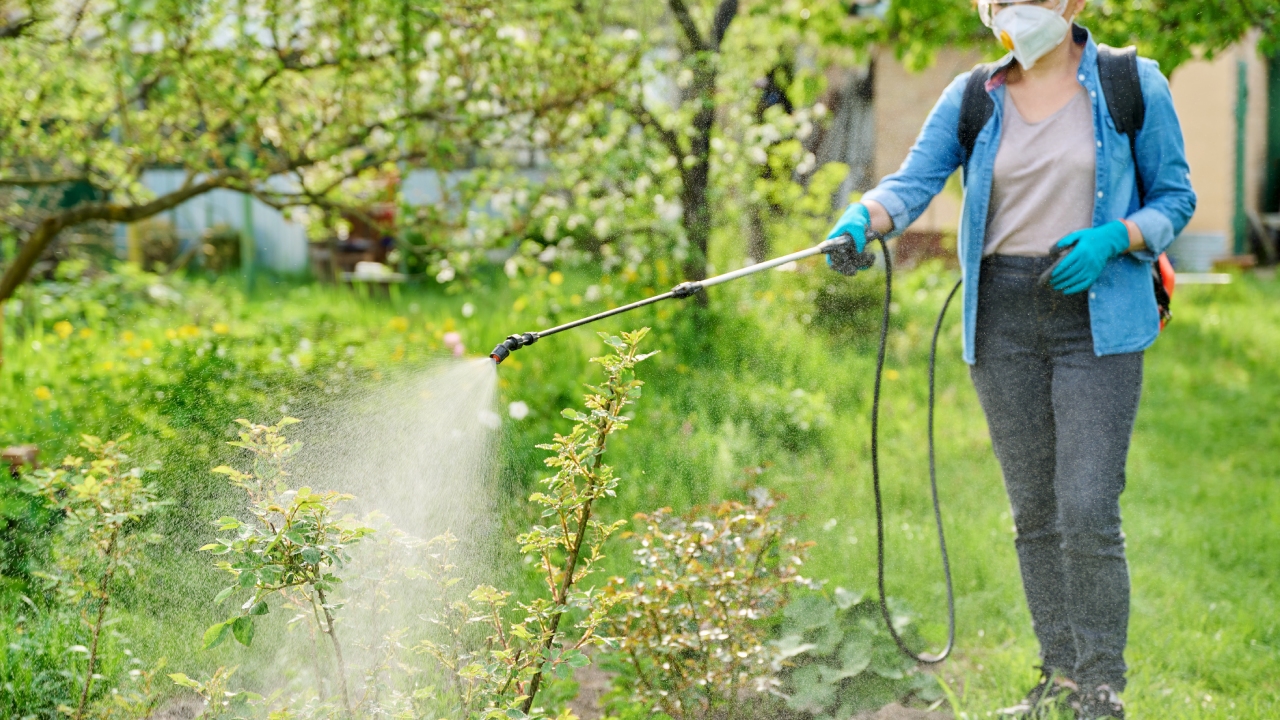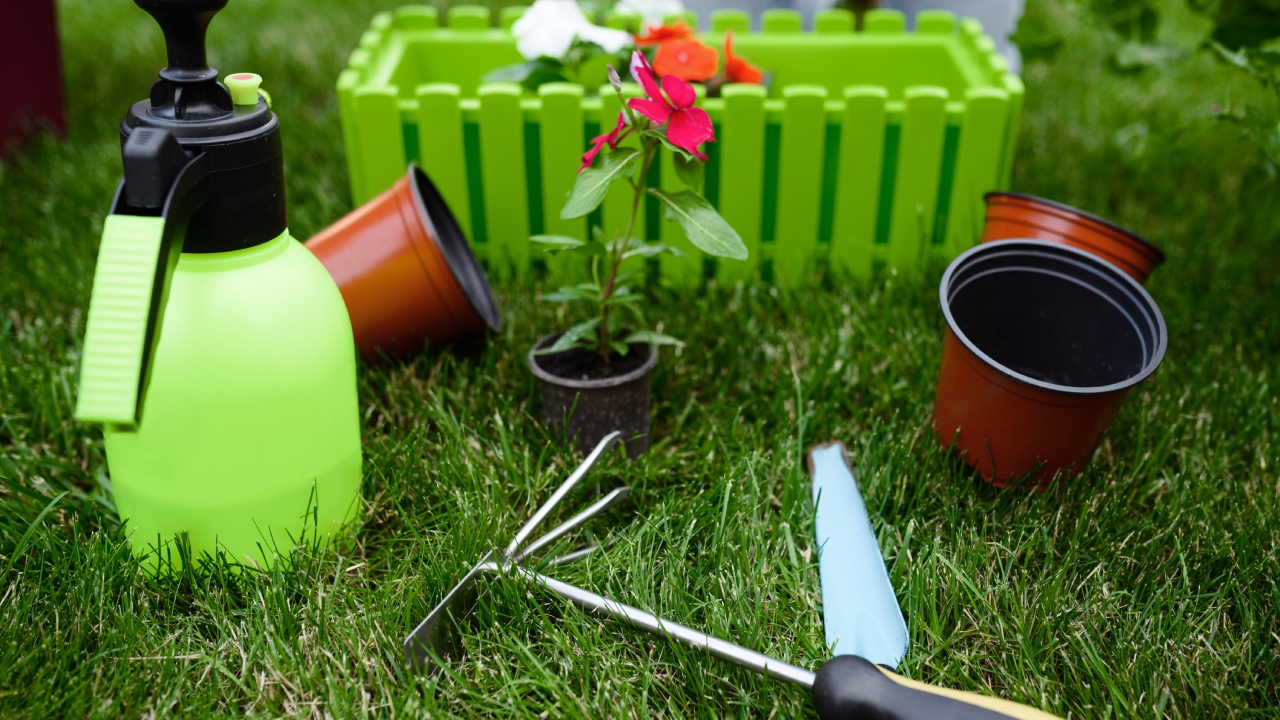Why Eco-Friendly Pest Control Rocks
Natural Methods: The Gift That Keeps on Giving
Ditching the chemical sprays for eco-friendly pest control is like swapping fast food for a home-cooked meal—better in the long run. Bugs can get wise to chemical pesticides, making them less effective over time. But natural methods? They use Mother Nature’s own tricks, making it tough for pests to outsmart them. This means you get a more reliable and wallet-friendly solution for your home or business.
| Control Method | Long-Term Effectiveness | Resistance Development |
|---|---|---|
| Chemical Pesticides | So-So | High |
| Natural Methods | Awesome | Low |
Keeping Your Yard and the Planet Happy
Using natural pest control is like giving your garden a spa day. Chemical treatments can mess up your soil and even the air, making it hard for plants to bounce back. Eco-friendly methods, on the other hand, keep the good bugs and critters around while getting rid of the bad ones. This balance is key for a thriving garden or lawn.
| Method | Environmental Impact | Soil Health | Beneficial Insects |
|---|---|---|---|
| Chemical Pesticides | High | Poor | Harmful |
| Natural Methods | Low | Great | Helpful |
Plus, if you’ve got pets, eco-friendly options are a no-brainer. Things like diatomaceous earth, citrus, essential oils, and companion plants keep your furry pals safe from nasty chemicals.
Going green with pest control also means you’re doing your bit for the planet. These methods often replace harmful chemicals, keeping both your grains and your employees safe from pests and toxic treatments. With the latest tech, they work best when part of an Integrated Pest Management (IPM) program.
So, why stick to old-school pesticides when you can go green and get better results? Your garden, pets, and the planet will thank you.
Why Go Green with Pest Control?
Switching to eco-friendly pest control isn’t just a trend; it’s a smart move for your home and the planet. Let’s break down two big perks: keeping the good bugs around and making sure your pets stay safe.
Keeping the Good Bugs
One of the best things about our green pest control is that it doesn’t mess with the good bugs. Regular pesticides wipe out everything, good and bad, throwing your garden out of whack. Our natural methods let the helpful critters stick around and do their thing.
Good bugs like ladybugs, bees, and butterflies are the unsung heroes of your garden. They help with pollination and keep the bad bugs in check. Here’s a quick look at why these bugs are your garden’s best friends:
| Good Bug | What They Do |
|---|---|
| Ladybugs | Eat aphids and other pests |
| Bees | Pollinate flowers, fruits, and veggies |
| Butterflies | Help with pollination and add to biodiversity |
| Earthworms | Keep the soil healthy and break down organic stuff |
Pet-Friendly Pest Control
Our green pest control methods are safe for your pets, so you don’t have to worry about Fido or Fluffy getting sick. Regular pesticides can be a real hazard for pets, causing everything from skin rashes to serious health issues. Our natural options, like diatomaceous earth, citrus, essential oils, and companion plants, are pet-safe.
These natural solutions tackle pests without putting your pets at risk. Check out how some of these methods stack up in terms of pet safety:
| Natural Method | Pet Safety |
|---|---|
| Diatomaceous Earth | Safe if used right |
| Citrus | Non-toxic and pet-friendly |
| Essential Oils | Safe when diluted, but keep pets from eating them |
| Companion Plants | Totally safe for pets |
By going green with pest control, you’re not just protecting your garden; you’re also keeping your pets safe. It’s a win-win that fits with our mission to offer effective, sustainable, and safe pest control for your home or business.
Convenience and Safety Features
Keeping your lawn lush and your home comfy shouldn’t be a hassle. Our pest control solutions are all about making life easier and safer for you and your family.
Easy-Peasy Pest Control
Eco-friendly pest control is a game-changer compared to old-school fumigation. No more packing up, emptying the fridge, or covering every piece of fabric in sight. Natural methods let you go about your day without turning your home upside down (Hippo).
| Method | Disruption Level | Requires Evacuation? | Chemical Residue? |
|---|---|---|---|
| Traditional Fumigation | High | Yes | Yes |
| Natural Pest Control | Low | No | No |
Safe for Everyone at Home
Safety first, especially with kids and pets around. Natural pest control options like diatomaceous earth, citrus, essential oils, and companion plants are safe for your furry friends and little ones (Hippo). No toxic chemicals, no worries.
Plus, these eco-friendly methods are kind to Mother Earth. Swapping out chemicals for natural solutions helps keep the environment healthy.
| Pest Control Method | Pet-Safe? | Chemical-Free? | Environmental Impact |
|---|---|---|---|
| Diatomaceous Earth | Yes | Yes | Low |
| Citrus | Yes | Yes | Low |
| Essential Oils | Yes | Yes | Low |
| Companion Plants | Yes | Yes | Low |
Choosing our pest control solutions means you’re opting for safety, convenience, and a greener planet. It’s a win-win for your home and the environment.
Green Pest Management Techniques
We’re all about keeping your lawn and commercial spaces pest-free without harming the planet. Our green pest management techniques are designed to be safe for the environment and your health.
Eco-Friendly Methods
Going green with pest control means ditching harsh chemicals for more natural solutions. These methods keep your grain products and employees safe from pests and the nasty side effects of chemical treatments (Orkin). Here’s how we do it:
- Biological Controls: Using nature’s own pest fighters like predators or parasites.
- Cultural Practices: Rotating crops, planting pest-resistant varieties, and keeping soil healthy.
- Mechanical Devices: Setting up traps, barriers, and other physical methods to keep pests at bay.
These techniques help us manage pests effectively while being kind to the environment.
Why Integrated Pest Management (IPM) Matters
Integrated Pest Management (IPM) is all about using smart, common-sense practices to tackle pests in a way that’s safe for people, property, and the planet (EPA). Farmers and producers are increasingly turning to IPM to fight pests and prevent resistance (USDA NIFA).
Key parts of IPM include:
- Pest Monitoring and Identification: Keeping an eye on pest populations to know exactly what we’re dealing with.
- Preventive Measures: Taking steps to stop pests before they become a problem, like proper sanitation and habitat changes.
- Least-Toxic Alternatives: Using the safest and most effective methods available.
IPM is a smart, cost-effective way to handle pests while protecting human and environmental health. By combining different tactics and focusing on prevention, IPM offers long-term pest control that’s better than traditional methods.
IPM Framework and Benefits
Integrated Pest Management (IPM) is designed to cut down on the economic, health, and environmental risks of pest control (NCBI). It’s all about sustainability and smart management.
| Benefit | Description |
|---|---|
| Economic Efficiency | Saves money by using multiple tactics. |
| Health Protection | Reduces exposure to harmful chemicals, keeping humans and pets safe. |
| Environmental Sustainability | Lowers the use of chemical pesticides, protecting the environment. |
By adopting IPM, we not only tackle pests effectively but also help create a healthier, more sustainable environment for everyone.
With our green pest management techniques and a strong focus on Integrated Pest Management (IPM), we aim to provide top-notch pest control solutions for your lawn and commercial spaces.
Smart Ways to Keep Pests at Bay
Integrated Pest Management (IPM) is all about using a mix of methods to keep pests under control without breaking the bank or harming people, property, or the planet. At Comprehensive Irrigation and Lawn Care, we’ve got some nifty IPM tricks up our sleeves to keep your lawn and commercial spaces looking sharp and pest-free.
Keeping an Eye on Pests
Keeping tabs on pests is key. By regularly checking for potential pest problems, we can nip issues in the bud. Here’s how we do it:
- Regular check-ups
- Using traps
- Keeping records and analyzing data
| How We Monitor | How Often | Why It’s Good |
|---|---|---|
| Visual Checks | Weekly | Spotting pests early |
| Sticky Traps | Every two weeks | Tracking pest numbers |
| Pheromone Traps | Monthly | Identifying specific pests |
These methods help us figure out what pests we’re dealing with and how to handle them best.
Natural Repellants and Growth Stoppers
Besides keeping an eye out, we use eco-friendly pest control methods like repellants and insect growth regulators (IGRs). These are great alternatives to harsh chemicals and help us manage pests without hurting the environment (Orkin).
Repellants: These keep pests away from treated areas, cutting down the need for stronger measures.
Insect Growth Regulators (IGRs): IGRs mess with the life cycle of pests, stopping them from growing up and reproducing. This is a great way to keep pests in check for the long haul.
| Control Method | Example | Pests Targeted |
|---|---|---|
| Repellants | Essential Oils | Mosquitoes, Ants |
| IGRs | Methoprene | Fleas, Roaches |
By mixing these strategies, we offer pest control that’s effective, safe, and sustainable. Our eco-friendly approach keeps your lawn and commercial spaces looking great without harming the environment.
Keeping Your Space Pest-Free
Keeping pests out starts with good cleaning habits and regular upkeep. These eco-friendly steps are key to stopping pests from taking over your home or business.
Easy Ways to Keep Pests Away
Good cleaning and upkeep are simple but powerful ways to keep pests out. By cutting off their access to food, water, and shelter, you make it harder for them to stick around. Here’s what you should do:
- Clean floors, counters, and food prep areas often
- Store food in sealed containers
- Take out the trash regularly
- Check and clean drains often
Keeping your place in good shape is just as important. Make sure windows, doors, and other entry points are sealed tight to keep pests out. Regularly check for and fix any cracks or openings in your building.
| What to Do | How to Do It |
|---|---|
| Clean Up | Clean regularly, store food properly, take out trash |
| Fix Up | Seal entry points, fix cracks, check for openings |
Smart Green Pest Control
Green pest control works best when it’s aimed at specific pests. We team up with pest experts who know all about pest habits. This way, we pick the best methods for your place and the environment.
Integrated Pest Management (IPM) is a big part of our plan. IPM uses a mix of methods that are effective and safe, focusing on prevention and alternatives to harsh chemicals. This approach is safe, cost-effective, and works well over time, keeping both people and the planet healthy.
Key parts of IPM include:
- Watching for Pests: Regular checks to spot pest activity
- Natural Control: Using predators or parasites to manage pests
- Physical Control: Using traps and barriers
- Chemical Control: Using eco-friendly insecticides only when needed
| IPM Method | What It Involves |
|---|---|
| Watching for Pests | Regular checks and identification |
| Natural Control | Using predators or parasites |
| Physical Control | Traps and barriers |
| Chemical Control | Eco-friendly insecticides as a last resort |
By focusing our green pest control on specific pests, we make sure our methods are both effective and sustainable. This not only reduces the risk of pest damage and costs but also helps keep the environment healthy.
Smart Pest Control: Keep the Bugs Out, Save the Good Guys
Getting rid of pests without wrecking the environment or harming beneficial critters is the name of the game. Let’s break down two smart ways to do this: using selective pesticides and messing with insect mating rituals.
Pesticide Selectivity Tests
Ever heard of selective pesticides? They’re like the snipers of the pest control world. Instead of nuking everything in sight, they target only the bad bugs, leaving the good ones to do their thing. According to NCBI, these pesticides, like nonsteroidal ecdysone agonists (BAH compounds), are super picky about what they kill.
Using these selective pesticides means you can keep natural predators and pollinators buzzing around, doing their jobs. Check out this quick comparison:
| Pesticide Type | Target Pest | Selectivity | Environmental Impact |
|---|---|---|---|
| Nonsteroidal Ecdysone Agonists (BAH) | Specific Insects | High | Low |
| Broad-Spectrum Insecticides | Multiple Insects | Low | High |
| Microbial Insecticides | Specific Insects | High | Low |
Mating Disruption Techniques
Now, let’s talk about playing matchmaker—or rather, match-breaker—for bugs. Mating disruption involves releasing fake sex pheromones to confuse male insects. They end up flying in circles, unable to find a mate, which means fewer eggs and larvae to deal with.
This method is a win-win: no chemical residues and it only messes with the pests you want to control. Here’s why it rocks:
- No nasty chemicals left behind
- Only targets the pests, not the good guys
- Long-lasting and sustainable
By using these smart pest control methods, we can keep your lawn and commercial spaces looking sharp without harming the environment. It’s all about effective solutions that are kind to Mother Nature.
Affordable and Green Pest Solutions
When it comes to pest control, we’re all about keeping it affordable and eco-friendly. We mix modern techniques with proven strategies to keep pests at bay without harming the planet.
Smart Pest Control Methods
We aim to cut costs and protect the environment. A study found that using green insecticides and removing infested plants together is the best way to save money and reduce damage. This combo can slash potential losses from 65.36% to just 6.12% (NCBI).
| Control Method | Loss Reduction (%) |
|---|---|
| No Control | 0 |
| Green Insecticide | 45 |
| Plant Removal | 35 |
| Both (Green Insecticide + Plant Removal) | 6.12 |
Why IPM Rocks for Pest Control
Integrated Pest Management (IPM) is our go-to strategy. It’s all about using the best and least harmful methods, focusing on prevention and alternatives to harsh chemicals. This approach is safe, cost-effective, and great at keeping pests in check while protecting people and the environment.
IPM uses a mix of techniques like:
- Chemical Controls: Using specific pesticides that target pests but spare beneficial insects.
- Biological Controls: Bringing in natural predators or parasites to handle pests.
- Cultural Practices: Changing farming or landscaping habits to make life tough for pests.
- Mechanical Devices: Using traps, barriers, and other physical tools to keep pests away.
With IPM, we use these methods to stop pests before they become a problem, ensuring long-term success and sustainability.
| IPM Method | What It Does |
|---|---|
| Chemical Controls | Targets specific pests with selective pesticides |
| Biological Controls | Uses natural predators or parasites |
| Cultural Practices | Changes habits to reduce pest-friendly environments |
| Mechanical Devices | Employs traps, barriers, and physical tools |
Choosing us means you’re picking a pest control service that’s effective and kind to the environment. We’re committed to providing solutions that protect your property and the planet.
Health and Environmental Considerations
When it comes to getting rid of pests, knowing the health and environmental impacts is key. We focus on eco-friendly methods to protect both you and the planet.
Risks of Conventional Pesticides
Pesticides are made to kill pests, but they can also harm people and the environment. According to the EPA, you can be exposed to pesticides through your skin, mouth, or by breathing them in. This can cause both short-term and long-term health problems.
| Health Effect | What It Means |
|---|---|
| Nervous System Damage | Caused by chemicals like organophosphates and carbamates |
| Skin and Eye Irritation | Common with many pesticides |
| Cancer Risks | Some pesticides can cause cancer |
| Hormone Disruption | Certain pesticides mess with your hormones |
Safe and Effective Pest Control Practices
We focus on pest control methods that are safe and work well, using green pest management techniques. Our practices aim to reduce health risks and environmental harm.
| Practice | What We Do |
|---|---|
| Integrated Pest Management (IPM) | Uses a mix of biological, cultural, and mechanical methods |
| Natural Repellents | Uses substances that keep pests away without harmful chemicals |
| Regular Monitoring | Finds pest problems early to stop them from getting worse |
| Custom Solutions | Adapts methods based on the specific pest and environment |
By using these safe and effective pest control practices, we make sure our solutions work well and are safe for everyone.












